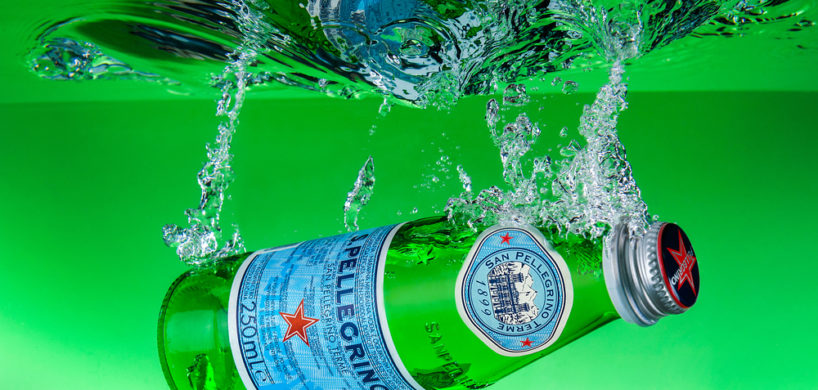San Pellegrino

San Pellegrino mineral water flows from a thermal spring at the foot of a dolomite mountain wall towering above the Brembo River in the Italian Alps.
The water may originate from a layer of rock 400 metres (1,300 ft) below the surface, where it is mineralized from contact with limestone and volcanic rocks. It emerges from three deep springs at a temperature of about 22°C (72 °F). The springs are located at the foot of a Dolomite mountain wall which favours the formation and replenishment of a mineral water basin. The water then seeps to depths of over 700m (2,300 ft) and flows underground to a distant aquifer.
Certain rare geological conditions can produce naturally carbonated water; often the carbonation can be attributed to volcanic activity. Naturally carbonated waters have historically been highly sought after for their supposed curative properties. San Pellegrino was one of the first bottled Natural Carbonation waters.
San Pellegrino mineral water has been produced for over 600 years. In 1395, the town borders of San Pellegrino were drawn, marking the start of its water industry. Leonardo da Vinci visited the town in 1509 to sample and examine the town’s “miraculous” water, later writing a treatise on the subject. Analysis shows that the water is strikingly similar to the samples taken in 1782, the first year such analysis took place.
